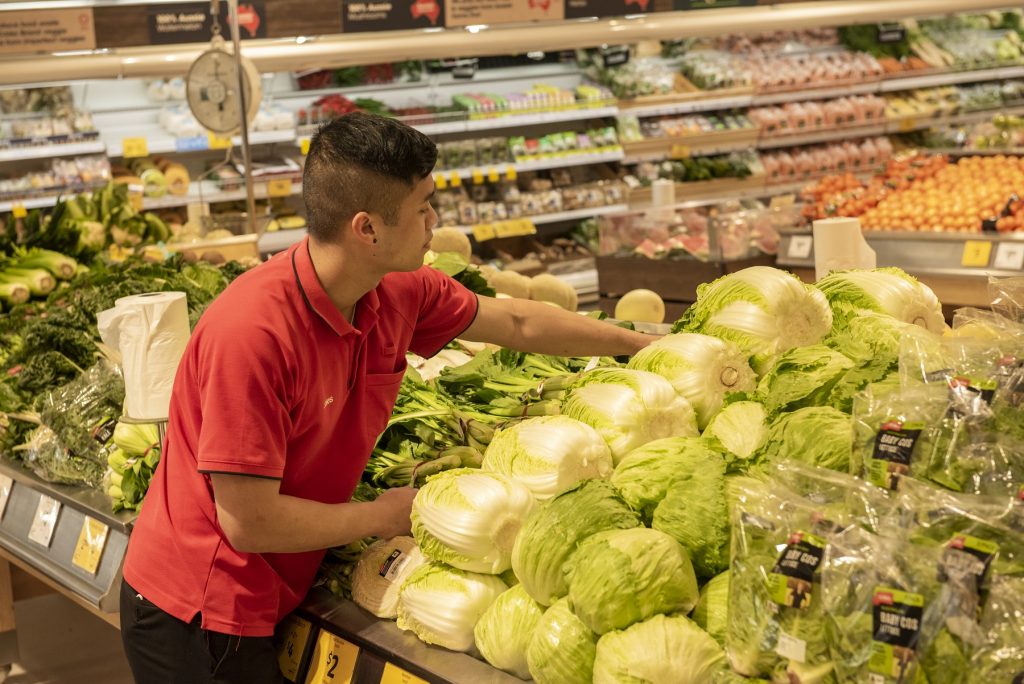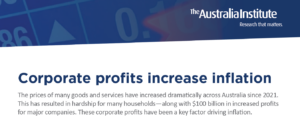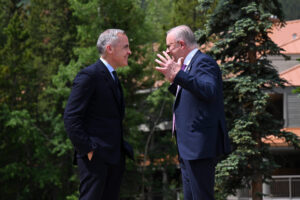Australians are paying prices that are too high, too often.
This is the conclusion of an inquiry into price gouging by big business conducted by Allan Fels, former head of the watchdog Australian Competition and Consumer Commission.
Now, this may be as obvious as the nose on your face if you pay for things on a daily basis, but the idea that excessive corporate profits have anything to do with rising inflation and the rising cost of living has been a surprisingly controversial one in recent years. Absurdly, many commentators have been blaming workers for the rise in inflation. Precious few people, certainly no one at the Reserve Bank of Australia, would admit that excessive corporate profits might have something to do with the cost-of-living crisis.
RBA Governor Michele Bullock, appearing before a Parliamentary inquiry this week, finally conceded that some businesses are using the “cover” of high inflation to push up prices. But for a long time, the RBA was seemingly content to ignore the role of corporate profits in driving inflation.
The Fels inquiry looked in detail at price gouging across a range of industries, including banks, insurance companies, supermarkets, and energy providers, following a period of the highest inflation in 30 years and the biggest falls in real wages on record. Price gouging is when ‘businesses take advantage of their market power and set prices well above their costs of production’.
At the National Press Club, Fels mentioned the flood of submissions from people like Danielle, a nurse whose bills had risen by an estimated total of $8,700 in one year, while her wage had risen by just $102 in the same time.
Many commentators have spent the last few years blaming rising inflation on workers like Danielle and her $102 wage rise, while ignoring the role of corporate profits—the $8,700 a year rise in Danielle’s bills.
When the Australia Institute looked at the numbers, we concluded that excessive corporate profits were largely responsible for driving the lion’s share of the burst of inflation that followed COVID lockdowns. The findings were dismissed and some people even demanded we retract our research. However, the OECD—run by former Finance Minister Matthias Corman—released research that used a similar methodology and found basically the same thing as the Australia Institute: that corporate profits contributed far more to Australia’s rise in inflation than wages and other employee costs.
It’s as plain as day that working people have been paying the price for corporate greed. But the ACTU inquiry by Allan Fels and now the Greens select Senate inquiry into the price gouging of major supermarkets have both shone a spotlight on prices.
Australians are paying higher prices everywhere – higher insurance premiums, higher airfares, higher petrol prices, higher prices for groceries at the supermarket and, of course, higher rents and much higher interest rates thanks to the Reserve Bank.
The Albanese government has intervened to directly reduce prices where it can, including for childcare and the cost of prescriptions.
But the fact is while working Australians are doing it tough, big business is raking in profits thanks to price gouging and a lack of competition. For decades the Australian economy has been dominated by ‘the big’ companies: the big banks, the big supermarkets, the big mining companies, the big airlines and the big insurance companies. They are all raking in big profits off the backs of everyday Australians.
The Commonwealth Bank posted a $5 billion half-yearly cash profit after the bank deliberately shrunk its home loan book. The AFR reported that companies “Origin Energy, AGL Energy, News Corp, Nick Scali and Transurban all reported stronger-than-expected profit margins” this month.
That means bigger prices and bigger bills for Australians. Fels talked about different ways companies engage in price gouging. He cited the work of Professor Lynne Chester from Sydney University who has quantified just how much one specific form of price-gouging is affecting your bills. Professor Chester compared the prices which consumers and big businesses pay for electricity and gas and found that for every consumer gas bill of $1000 there is $348.24 excess relative to prices charged to large business customers and not accounted for by genuine cost differences. That’s one third of your gas bill your gas company needs to explain to you.
I single out gas bills because gas companies have been raking in tens of billions of dollars in windfall profits, while the Australian government collects more money from HECS than it does from our primary tax on gas, the Petroleum Resource Rent Tax. It’s obscene.
Australia desperately needs to increase the PRRT and give the competition watchdog more power to deal with big business in general.
In good news, millions of low and middle income earners will be better off from 1 July this year thanks to the Albanese government redesigning the Stage 3 tax cuts. People earning between $18,200 and $45,000 per year, who were going to get nothing from the former Coalition government, will now get a tax cut. That will help millions of people across the country.
This has upset the big business lobby groups. Not content with record profits and record prices, now they are using the Stage 3 changes as an excuse to try to gouge workers in their pay packets, as well as at the checkout.
The Australian Industry Group (which naturally backed the original Stage 3 tax cuts that would have delivered over $100 billion over the next five years to high income earners but next to nothing to those on the minimum wage) is warning about a ‘double whammy’ for employers and urging the Fair Work Commission to limit increases to the minimum wage to account for the benefit they’ll now receive from the Stage 3 tax cuts.
Big business in Australia is living high on the hog, while working Australians are struggling to put food on the table. Perhaps the RBA should advise CEOs to tighten their belts before continuing to scapegoat workers for our inflation problems.
Between the Lines Newsletter
The biggest stories and the best analysis from the team at the Australia Institute, delivered to your inbox every fortnight.
You might also like
Corporate profits increase inflation
The prices of many goods and services have increased dramatically across Australia since 2021. This has resulted in hardship for many households—along with $100 billion in increased profits for major companies. These corporate profits have been a key factor driving inflation.
Canada, don’t make the same mistake with LNG that Australia did
For decades, the populous eastern states of Australia had an abundant supply of low-cost gas.
If business groups had their way, workers on the minimum wage would now be $160 a week worse off
Had the Fair Work Commission taken the advice of business groups, Australia lowest paid would now earn $160 less a week.



